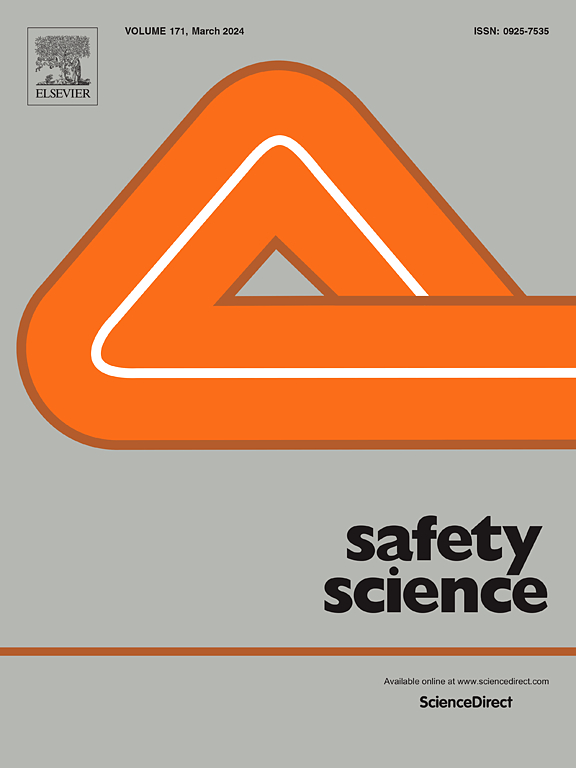A scenario-based heterogeneous fleet planning with victim demand modeling for flood evacuation
IF 5.4
1区 工程技术
Q1 ENGINEERING, INDUSTRIAL
引用次数: 0
Abstract
Floods have emerged as a worldwide challenging disaster primarily due to global warming. Thus, ensuring an adequate heterogeneous evacuation fleet to promptly evacuate affected victims is of utmost importance. Correspondingly, properly coordinated evacuation fleet planning should explicitly unify both aspects of demand (number of victims) and supply (provision of evacuation vehicles). However, the demand and supply aspects are rarely explored simultaneously in past studies. By embedding a novel 3-step victim demand modeling framework, this study develops a scenario-based heterogeneous fleet planning model to maximize the total number of victims evacuated from disaster areas and minimize the composition of heterogeneous evacuation vehicles. The proposed approach can capture evacuation demand and supply in a single unified framework to solve flood evacuation problems under different flooding scenarios, including low/moderate and high water levels. By analyzing an illustrative case study for the context of Malaysia, several insightful results are revealed: (1) the probable demand level of victims for evacuation would vary greatly under different flood severity due to numerous influential factors; (2) varying compositions of evacuation vehicles (buses, vans, lorries, and boats) would be optimally required to evacuate different clusters of affected victims; (3) incorporating fleet adjustment strategy would impact the total evacuation time to a certain extent. (4) the proposed approach is computationally efficient to yield the optimal fleet planning decisions. Concisely, it is anticipated that the proposed bi-objective fleet planning approach, which possesses beneficial managerial implications, could assist relevant stakeholders, especially emergency planners and rescue teams, in implementing a smart evacuation strategy.
洪水疏散中基于场景的异构舰队规划与受害者需求建模
由于全球变暖,洪水已经成为全球范围内具有挑战性的灾难。因此,确保一支足够的异质疏散船队迅速疏散受影响的受害者是至关重要的。相应地,适当协调的疏散车队规划应明确统一需求(受害者人数)和供应(提供疏散车辆)两个方面。然而,在过去的研究中,很少同时探讨需求和供应方面。本研究通过嵌入一种新颖的3步受害者需求建模框架,开发了基于场景的异构车队规划模型,以最大限度地从灾区疏散受害者总数,并最小化异构疏散车辆的组成。建议的方法可以在一个统一的框架内捕捉疏散需求和供应,以解决不同洪水情景下的疏散问题,包括低/中水位和高水位。通过对马来西亚的案例分析,得出了以下几点深刻的结论:(1)在不同的洪水严重程度下,由于众多的影响因素,灾民可能的疏散需求水平会有很大的差异;(2)疏散不同人群所需的疏散车辆(公共汽车、面包车、卡车和船只)的组合最优;(3)纳入车队调整策略会在一定程度上影响总疏散时间。(4)所提出的方法计算效率高,能够产生最优的车队规划决策。简而言之,预计拟议的双目标机队规划方法具有有益的管理影响,可协助相关利益攸关方,特别是应急规划人员和救援队实施智能疏散战略。
本文章由计算机程序翻译,如有差异,请以英文原文为准。
求助全文
约1分钟内获得全文
求助全文
来源期刊

Safety Science
管理科学-工程:工业
CiteScore
13.00
自引率
9.80%
发文量
335
审稿时长
53 days
期刊介绍:
Safety Science is multidisciplinary. Its contributors and its audience range from social scientists to engineers. The journal covers the physics and engineering of safety; its social, policy and organizational aspects; the assessment, management and communication of risks; the effectiveness of control and management techniques for safety; standardization, legislation, inspection, insurance, costing aspects, human behavior and safety and the like. Papers addressing the interfaces between technology, people and organizations are especially welcome.
 求助内容:
求助内容: 应助结果提醒方式:
应助结果提醒方式:


